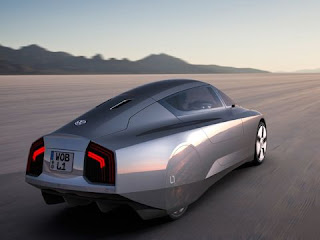Ford thinks could also revive the minivan market with seven-passenger vehicle is based on a small platform next-generation Focus. The Dearborn automaker revealed his Ford Grand C-Max at the Frankfurt auto show, announcing that he will arrive in the U.S. in late 2011.
With two sliding rear doors and high roof, the Grand C-Max minivan would like, but you prefer Ford calls this multi-activity vehicle, or MAV, to take you away from the stigma of ho-hum jelly beans from the 90s. After all, Ford expects these vehicles to serve as a step up from the Fiesta or Focus for young buyers who are just starting a family. While these small people mover is a relatively unexplored segment in the U.S., Grand C-Max is facing competition from the Kia Rondo and Mazda5 has been established in conjunction with the upcoming Chevrolet Orlando. Frankfurt Ford's announcement includes the introduction of all the C-Max five seats that have the traditional rear doors and a profile closer to the hatchback, but that car has not been confirmed for North America.
In Grand C-Max, seating for seven passengers were accommodated by the layout of 2-3-2. Center in the middle row seats collapsed and disappeared beneath the outboard seat when not necessary, leave a center aisle for access to the third row. Middle row also features one-touch access to the rear and all second-and third-row seats fold flat to carry cargo. Blind-spot warning, parallel parking assist, power liftgate and will be offered on the C-Max range of European and U.S. tend to Grand C-Max.
With two sliding rear doors and high roof, the Grand C-Max minivan would like, but you prefer Ford calls this multi-activity vehicle, or MAV, to take you away from the stigma of ho-hum jelly beans from the 90s. After all, Ford expects these vehicles to serve as a step up from the Fiesta or Focus for young buyers who are just starting a family. While these small people mover is a relatively unexplored segment in the U.S., Grand C-Max is facing competition from the Kia Rondo and Mazda5 has been established in conjunction with the upcoming Chevrolet Orlando. Frankfurt Ford's announcement includes the introduction of all the C-Max five seats that have the traditional rear doors and a profile closer to the hatchback, but that car has not been confirmed for North America.
In Grand C-Max, seating for seven passengers were accommodated by the layout of 2-3-2. Center in the middle row seats collapsed and disappeared beneath the outboard seat when not necessary, leave a center aisle for access to the third row. Middle row also features one-touch access to the rear and all second-and third-row seats fold flat to carry cargo. Blind-spot warning, parallel parking assist, power liftgate and will be offered on the C-Max range of European and U.S. tend to Grand C-Max.












